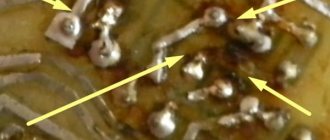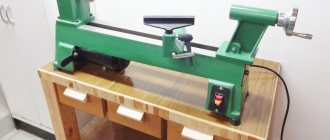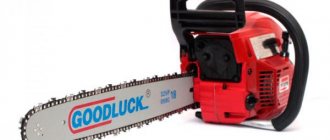Before buying a new electronic device, most still try to repair the old one with their own hands. There are many ways to fix a breakdown, and everything will depend on the type of device that requires repair. However, soldering has been and remains a very common method of troubleshooting. Mastering it is not as difficult as it might seem, you just need to take into account a few rules. For example, that one soldering iron will not be enough and most often you cannot do without flux. This material provides more details about what soldering flux is.
What is soldering flux
In short, soldering flux is a tool that helps make high-quality soldering. It can be of either organic or inorganic origin, but in most cases it is always a mixture of several materials.
Before using this composition, you need to clean the soldering area, but sometimes fluxes themselves can clean the material. No other preparatory work is usually required before using it, except for those aimed at protecting against fumes, which soldering agents almost always produce.
In short, no quality solder joint is possible without flux.
What is it for?
The purpose of fluxes is easy to understand. To solder the contacts to each other, the metal needs to heat up to at least 500 degrees. But at this moment, an oxide film forms on the metals, which prevents the solder from connecting the metal parts. It is for these cases that flux is needed.
Typically, the flux is stable at room temperature and begins to act only when heated, reducing the effect of high temperatures on metals. So, fluxes help:
- Remove the oxide film that appears when rolling the metal.
- Prevent further oxidation.
- Wet the surface while soldering.
First of all, all fluxes must withstand heat and retain their properties. But these are not all the signs that you need to pay attention to when looking for a substance for soldering, which is even more difficult than using it.
With rosin
When planning the installation of electrical circuits or radio components using easily melting solders as flux, it makes sense to choose pure rosin or mixtures based on it.
The advantage of natural resin lies in its inertness. It perfectly protects the joint from oxidation and does not cause corrosion, reduction, or dissolution of metal parts.
After using regular light rosin, it is enough to clean the work area with a brush or cotton swab slightly moistened with alcohol. You can use acetone as a solvent.
For soldering in hard-to-reach places, it is advisable to choose a solution of rosin in alcohol. If you don’t have rosin, you can take pine resin. The result will not disappoint. Alcohol is sometimes replaced with cologne, gasoline, acetone, and ethyl acetate.
If the soldering area will be subject to high thermal loads in the future, it makes sense to add glycerin to the mixture of rosin and alcohol.
Ethyl alcohol of any degree of purification is suitable for preparing solutions. You need to take regular rosin, and not specially prepared for rubbing bows. “Musical” types may have impurities that interfere with soldering.
Classification of fluxes
How soldering agent works is easy to understand. But you still need to choose it correctly, and for this you need to study and take into account the types of fluxes. And this is the main difficulty, since you need to take into account a lot of parameters when choosing.
More information about what categories soldering products are divided into and how they differ from each other is described below.
There are a huge variety of fluxes depending on their purpose; it is necessary to choose the right composition
By type of impact on contacts
Among the types of fluxes for soldering are:
- Acid-free or “neutral” fluxes. They will not destroy the solder and generally do not show any chemical reactions in the areas where the solder is made. Usually used for soldering small parts. The product itself includes ethyl alcohol, glycerin, and turpentine. The melting point reaches 150 degrees.
- Anti-corrosion ones have phosphoric acid as the main ingredient, which is often used for the production of anti-corrosion impregnations. Therefore, when heated, these compounds not only cleanse the weld site from any corrosion that has arisen, but also prevent its reappearance.
- The active compounds contain hydrochloric acid and are therefore used only for iron. They are not suitable for radio equipment, as they damage the board. This flux removes oxides and reacts with the metal itself, making the compounds very strong. Cleaning before work is mandatory, as is strict adherence to safety rules - such soldering substances are poisonous when evaporated. Be careful as this flux will be a good conductor due to its composition. So, if they are not used carefully, you can get a short circuit. Sometimes active soldering agents are made from zinc chloride.
- Activated - made from salicylic acid or aniline hydrochloric acid, no cleaning is required before using them, since they themselves clean the adhesion site. Rinsing is not required, but is usually recommended. Typically, this composition is used for a connection that will be constantly mechanically damaged.
- Protective fluxes for soldering do not cause any chemical reaction, do not emit harmful substances during soldering, and protect materials from corrosion. They are made from Vaseline, wax or olive oil. Such soldering agents begin to melt at 70 degrees; stripping is not required when using them.
Popular varieties
Compositions of different consistencies are widely used. The most famous fluxes that can be chosen for soldering certain parts include:
- rosin and its alcohol solutions;
- glycerin solutions;
- borax;
- soldering grease;
- phosphoric acid;
- soldering acid (a solution of zinc chloride in hydrochloric acid);
- some brands of gel fluxes (Flux-Plus, RMA-223).
There are compositions in the form of tubes or paste briquettes containing both flux and solder. In many cases, this is a very convenient option that simplifies soldering.
When thinking about which flux can be used for soldering with a hairdryer, do not hesitate to choose paste. It is suitable mainly for surface mounting, working in hard-to-reach places, with SMD parts.
The best soldering flux performs all the necessary functions at once. There are different classifications of soldering aids.
Fluxes can be very active, good at removing oxides and other impurities on the surface. The opposite, unpleasant side of their action is the possibility of oxidation of the metal of the part. Soldering must be carried out carefully, followed by washing the work area.
There are compositions with moderate action that provide sufficient surface cleaning and good solder distribution.
Which flux is better to choose?
To choose a flux for soldering, you also need it to be suitable for the material to be soldered:
- For copper, for example, rosin is often used. It is suitable for any simple electronics with a large number of wires.
- Liquid solders with Vaseline or salicylic acid are useful for radiators and wires with one core.
- Liquid rosin is suitable for multi-core wires.
- The paste-like composition is suitable for radio components and various connectors, for SIM cards and flash drives, for example.
- Wires and connectors require active fluxes for soldering.
- For small radio components on boards, neutral fluxes in paste are suitable. When working with boards, you need to choose products that will not stain the board itself, since it is almost impossible to remove the product from the surface around the soldering area.
- Typically, activated compounds that do not require rinsing are chosen as flux for soldering microcircuits. They should be liquid or gel-like.
Also, when choosing fluxes, you should read other people’s reviews in order to make a choice from trusted brands, since many companies produce soldering products, but not all of them are of high quality.
What to wash off with
To wash off the flux after soldering the microcircuit, it is recommended to use any solvent suitable for this purpose, with which you can remove stains and traces of a neutral composition.
Most often, the following popular types of solvents are used to remove flux residues after soldering:
- pure technical or medical alcohol;
- regular acetone (or its mixture with other chemicals);
- alcohol-containing perfume compositions (although it is not advisable to use them).
There are special “washes” on sale for removing flux from boards, in the manufacture of which (with a few exceptions) the same components are used.
It is recommended to clean the boards with all the compounds listed above in the following sequence.
First, a piece of clean soft flannel is taken, which is then moistened in a small amount of liquid solvent (from the mixtures discussed earlier).
At the final stage of cleaning, the area of the microcircuit with the used flux is thoroughly wiped with a previously moistened cloth, which will thoroughly remove all traces and stains remaining on it. After the treated areas are completely dry, you can begin to coat them with protective varnish.
How to use soldering flux
To correctly apply soldering flux, you need to look at its consistency:
- If hard solder is used, for example, from tin, then the soldering iron itself needs to be dipped in the reagent, and then take a little solder.
- Liquid flux assumes that it will be applied with a special brush. You need to be careful here, as brushes often quickly deteriorate due to high temperatures.
- The paste is applied with a stick, toothpick or syringe with the tip of the needle cut off.
And then act like this:
- Clean the surface from oxides. Sometimes this is not required if the flux allows it.
- A layer of flux is applied.
- The composition and parts are heated at the soldering station.
After soldering is completed, you need to wait until the seam hardens.
CAPACITY 50ml and 11 NEEDLES
In its present form, using flux was inconvenient and wasteful, so I bought this kit, where I essentially don’t need the container, and what is valuable and necessary for me is the threaded needles that can be screwed onto syringes with flux.
Many people buy a polypropylene bottle for an alcohol-rosin solution, but for this purpose it is quite possible to use containers from eye drops or liquids from electronic cigarettes. Despite the fact that there is no thread on the lid nozzle, the needle fits quite tightly on it, and I still found a use for this - using the container as a pear to clear a clogged needle tube. It happened, I screwed a small diameter needle onto a syringe with flux and the tube just got clogged. The bottle helped clear it, since it can be squeezed in your hand without fear that the needle will “shoot.”
The needles themselves, as was said, are 11 pieces, of different hole diameters:
Dimensions
0.3mm, 0.4mm, 0.5mm, 0.6mm, 0.7mm, 0.8mm, 0.9mm, 1.1mm, 1.5mm and 2 identical 1.7mm
For syringes with fluxes 218
and
559
are screwed on without problems, I settled on the extreme large diameters of the needles -
1.5mm
and
1.7mm
Other uses
I didn’t wait for someone to ask or ask me about this in the comments, but decided to do it already at the stage of writing the review, namely, to use needles for soldering microcircuits with through-hole mounting.
0.9 mm
, was perfect for this task . First I tried it on the leg of a new capacitor that came to hand - it fit perfectly:
Then I tried to unsolder some multi-pin microcircuit from the old board, where I took SMD resistors from for the test:
The part was dismantled without problems. But the needle remained intact, the base of its attachment to the plastic did not collapse, since it was not exposed to strong heat.
But the component can be successfully desoldered if the needle itself passes through the hole in the board. If you need to desolder a comb whose leads are already thicker, then everything is somewhat more complicated. As an example, a comb soldered to a single-sided getinax board. I picked up a green needle 1.1mm
, however, it no longer passes through the holes of the board itself.
It is soldered, but not without dancing with a tambourine - after processing the contacts with a needle, you need to additionally tap so that the remaining solder moves away from the contacts. But in the case of double-sided boards with metalized holes, the needle will be completely powerless if it does not go through the hole. Here you can’t do without a destin pump.
The needles themselves are not clogged with anything; I did not use flux when desoldering parts.
Where are active fluxes used?
Soldering microcircuits with active fluxes is not recommended, as this may render the microcircuit unusable. Fluxes with aggressive acids are mainly used for soldering wires and metal products that are severely damaged by corrosion. It goes without saying that before soldering parts it is necessary to get rid of traces of corrosion on the metal.
Prominent representatives of active fluxes are: SF-OR/LF-3.5 flux, SFL-RO/NC-800 flux, ZN 85% soldering acid, LTI 120 flux and others. When using active flux, after completing soldering it must be washed off with plain water.
Instructions for making flux
So, how to make soldering flux with your own hands? It all depends on the destination. If you need to solder thin wires, you can use rods with a diameter of 1 mm. We will make them ourselves.
We will need a small bottle or any other vessel with a flat bottom. We make a hole in the bottom with the diameter we need (in this case 1-2 mm). We take lead or tin and melt it using a gas burner. Pour it into our bottle. Molten metal will begin to flow out of the hole; you need to prepare the surface in advance. You can use a sheet of tin, for example. The resulting “rods” must harden, then they need to be cut. Experienced craftsmen use special molds to make rods. Also look at the review of bga soldering flux.
We will need rosin crystals, which need to be crushed into powder. Wrap the crystals in a thick cloth and tap them with a hammer (preferably a wood hammer or a meat mallet). Mix the powder and alcohol in a one to one ratio. Alcohol can be purchased at a pharmacy. It is advisable to mix in a glass container, such as a small jar. Thoroughly mix the alcohol with the powder and place the jar in hot water. Mix everything thoroughly again until it has a homogeneous consistency. Ready! The resulting flux can be used with a medical syringe or poured into an empty nail polish bottle.
Soldering may release substances that are hazardous to your health. Use protective gloves, a mask and goggles in your work. Do not purchase fluxes from little-known manufacturers, do not chase the lowest price. If possible, make your own flux. Follow safety precautions. This way you will reduce the likelihood of poisoning from flux vapors.
Notes from a master. Part 3. Soldering matters - android.mobile-review.com
Hello!
We continue to learn about self-repair at home, without going to the service center.
Today we will talk about the basics of soldering work.
Workplace
When carrying out soldering work, ensure good ventilation and lighting. Also, make your workplace at a comfortable height. It is much more convenient for me when the table on which I perform soldering work is located slightly lower than a regular desk. This way your shoulders get less tired.
I strongly recommend getting a pad for the table on which you will solder. This will protect the table surface from damage from the soldering iron. In my opinion, a thick silicone mat is an excellent option. It is not afraid of high temperatures, and at the same time parts do not slip on it.
You can buy it at any household supermarket.
Safety precautions
Equip your workplace with a reliable holder for your soldering iron, which you won’t be able to accidentally move with your hand or pull off the wire. Keep all flammable materials away from the soldering iron.
It’s great if the soldering iron, lying in its place, is protected from the possibility of touching it (pets love to smell or touch them, and believe me, it won’t be very pleasant to run around the house after a screaming cat or dog whose nose or paw is swollen from getting to know the surface such an interesting subject). The same is true for young children.
Tools and materials
What do we need for soldering? To begin with, of course, a soldering iron with replaceable tips (ideally a soldering station). As I already wrote in the previous article, to start your repair work it is best to use a low-power soldering iron (25W), this way you will minimize the risk of overheating and therefore damaging the elements on the board.
The main consumables you will need for soldering are solder and flux.
Solder
Solder is a material used to connect various elements by soldering.
An alloy of tin with various materials is most often used as solder in electronics repair.
There are solders with different melting points. If you do not plan to solder aluminum pans, the most popular type of solder is suitable for you - POS-61 , which consists of 61% tin and 39% lead. Its melting point is 190 C.
POS-61 is my main type of solder. It comes in various forms, ranging from thick rods, ingots, and ending with thin, hollow tubes, the insides of which are filled with flux (rosin).
Thus, we get a convenient “2 in 1” material, the use of which greatly simplifies our life.
Thanks to this design, there is no need to break away from the soldering process and dip the soldering iron tip into the rosin.
But it is not always possible to use POS-61. In the process of repairing electronics, it often becomes necessary to solder elements that are sensitive to overheating, which must be soldered at a low temperature. In this case, I use Rose alloy (POSV-50) as solder. It consists of three elements, tin – 25%, lead – 25%, bismuth – 50%.
A special feature of this alloy is its very low melting point, only 94C (below the boiling point of water). In this case, you don’t have to worry about possible overheating of the circuit. However, it is important to understand that you should not solder elements with Rose alloy that are exposed to high temperatures during operation.
In addition to POS-61 and POSV-50, there are quite a large number of solders for various soldering conditions, but I am only talking about my own experience and home use, so I will limit myself to these two types that I use.
Fluxes
Flux is an active substance with the help of which soldered surfaces are cleaned of oxides, and better spreading of solder and its contact with the surface is ensured.
Here, a novice master will find freedom, and at the same time, the agony of choice.
All fluxes can be divided into two large categories: 1 - aggressive, 2 - non-aggressive. Aggressive ones are usually made on the basis of various acids that actively act on surfaces, so after use they must be washed off with Flux-off. Non-aggressive ones, as a rule, have well-known rosin.
The easiest way is to buy flux at any radio parts store. I most often use LTI-120.
But you can also make both types of flux yourself at home. The first, easiest way is to pour crushed rosin in a 50/50 ratio with alcohol and shake. As the alcohol evaporates, the flux will thicken. Just add alcohol to get it back to the right consistency. Important: add alcohol to the rosin to the desired consistency, and not to the master until it is in perfect condition.
SMD mounting
A hairdryer was used with the temperature set to 340 degrees, the air flow was 90 out of 100. In these tests, you can observe the effect of surface tension, when you do not need to physically correct the SMD components if they jumped off the platform a little, because they stand up on their own as they should under the influence the above effect.
RMA-223
This cheap flux here began to show signs of suitability, the element seemed to have shrunk, but the surface of the solder remained not smooth, but somewhat loose.
Kingbo 218
When used with this flux, the components in the 1206 case tend to move, but they can be soldered; however, when installing the 0805 elements, difficulties arise - they simply fly out to the side with a stream of air, you need to hold them.
NC-559
This flux is already on the contrary - it showed itself better, element 1206 does not move, so I decided to complicate the test for it and test it on a smaller component - 0805. Here the capacitor only rears up, but the surface tension effect ultimately does its job.










